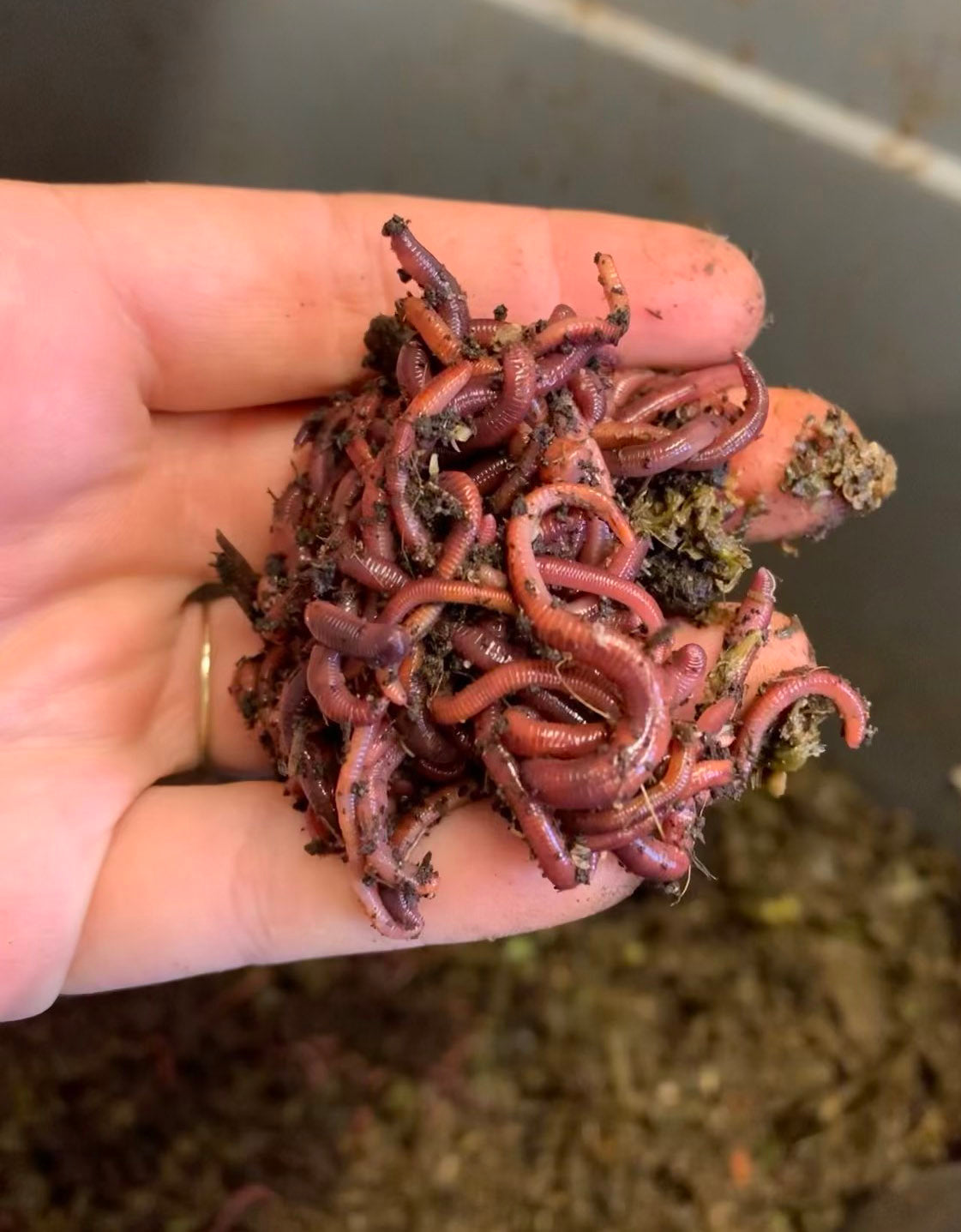Red Wigglers: The Unsung Heroes of Organic Waste Recycling
Red wigglers, or Eisenia fetida, work as vital representatives in the organic waste reusing procedure, changing thrown out products into useful vermicompost. Their effective breakdown of raw material not only enhances dirt top quality yet additionally contributes to sustainable waste management methods. As the world significantly looks for solutions to fight waste accumulation and improve farming efficiency, understanding the function of these worms ends up being crucial. What mechanisms enable them to prosper in garden compost settings, and how can they be effectively utilized in both household and business setups? Checking out these questions reveals the more comprehensive ramifications of vermicomposting in our eco-friendly landscape.
What Are Red Wigglers?
The remarkable durability of red wigglers, scientifically understood as Eisenia fetida, underscores their critical role in natural waste recycling. These little, reddish-brown earthworms are typically located in breaking down raw material, such as garden compost heaps and manure stacks. Lake Hickory Bait. Unlike various other earthworm varieties, red wigglers flourish in nutrient-rich settings and are highly reliable at breaking down organic products, making them essential for vermicomposting

(Red Wiggler Express)In addition to their function in waste reduction, red wigglers add to dirt health and wellness by boosting dirt framework and oygenation with their delving activities (Lake Hickory Bait). Their existence in composting systems not just boosts decay prices but also promotes a sustainable approach to waste management, illustrating their significance in environmental preservation initiatives
Advantages of Composting With Worms
Composting with worms, particularly red wigglers, provides many advantages that enhance both waste management and soil wellness. First, these worms successfully break down organic waste, transforming it right into nutrient-rich vermicompost that improves dirt. This process speeds up decomposition, permitting a faster recycling of kitchen scraps and various other natural materials compared to typical composting approaches.
In addition, the vermicompost generated by red wigglers is brimming with advantageous microorganisms, which help boost soil framework, aeration, and wetness retention. This enhances the total health and wellness of plants, advertising energetic growth and raised returns in yards and agricultural setups. Moreover, making use of worms in composting lessens the manufacturing of greenhouse gases, such as methane, contributing to an extra lasting waste management system.

Exactly How to Begin Vermicomposting
Developing a vermicomposting system is a straightforward process that can yield considerable benefits for both waste monitoring and soil enrichment. To begin, choose an appropriate container, such as a plastic bin or wood box, with ample ventilation holes to guarantee appropriate air flow. The dimensions should ideally be around 2 feet by 3 feet, enabling adequate room for the worms to prosper.
Following, prepare bed linens product, which can contain shredded paper, cardboard, or coconut coir. This bed linen ought to be moistened to create a suitable habitat for the worms. As soon as the bed linens remains in location, introduce red wigglers (Eisenia fetida) into the bin, normally around one extra pound of worms for each square foot of surface.
Following the positioning i thought about this of worms, include organic waste, such as fruit and vegetable scraps, coffee premises, and crushed eggshells. With these actions, you will efficiently initiate a vermicomposting system that contributes to lasting waste management and enriches your dirt.
Keeping a Healthy Worm Bin
(Lake Hickory Bait)Keeping a worm container prospering requires normal focus and treatment to ensure the health and wellness of the red wigglers and the effectiveness of the composting process. Appropriate upkeep begins with checking the wetness degrees; the container must be damp however not waterlogged. A great guideline is to preserve a consistency comparable to a wrung-out sponge.
Gently blending the bedding and food scraps every few weeks stops compaction and makes certain that all worms have accessibility to oxygen. In addition, it is important to feed the worms properly.
Temperature level regulation is another vital facet. Red wigglers flourish in a variety of 55 to 77 degrees Fahrenheit. If the bin becomes also hot or cool, the worms may become stressed out - Lake Hickory Bait. Last but not least, periodically look for indicators of wellness, such as worm populace development and the presence of healthy castings. By vigilantly taking care of these variables, one can keep a durable and efficient worm bin.
Effect On Sustainable Living
The successful maintenance of a worm bin not just benefits the wellness of red wigglers however also contributes considerably to sustainable living methods. By recycling natural waste, such as cooking area scraps and lawn debris, red wigglers help divert significant amounts of material from land fills. This reduction in waste not just reduces greenhouse gas discharges but likewise minimizes the ecological concern associated with waste administration.
Moreover, the spreadings produced by red wigglers work as a nutrient-rich organic fertilizer, enhancing dirt health and wellness and advertising plant development. This all-natural alternative to chemical plant foods supports lasting agriculture and horticulture techniques, lowering dependence on artificial inputs that can damage ecological communities. Furthermore, worm composting cultivates understanding of waste administration, encouraging people and communities to adopt more sustainable habits.

Conclusion
In recap, red wigglers offer as essential factors to natural waste recycling with their efficient decay of organic products. By incorporating vermicomposting into waste monitoring methods, people and communities can significantly lower waste while advertising environmental sustainability.